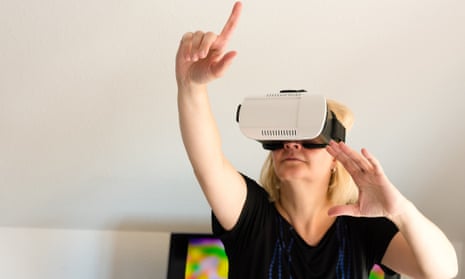Do you ever ponder the virtual reality headset you agreed to trial at the start of 2016 and think: “Nah, this thing will never take off”? Too unrealistic. Too many daft situations. It may have stated clearly on the box that it would “heighten” everyday experience – but it still promised to resemble the real world “at least in some vaguely plausible way”. Now look around. Kanye West is set to run for president, the public have voted for a £60bn economic blackhole in return for blue passports, Boris Johnson is the foreign secretary and, yep, the headset needs to go back to the factory for further user-testing. Especially to sort out the Johnson thing.
Certainly, I thought my own grip on reality was playing up last week while watching ITV’s This Morning (I was off sick), during which a seemingly straight-faced Holly Willoughby asked Peter Jones of Dragons’ Den fame if she could be looking at the next prime minister. Er, you wot, mate? Had I missed something? I waited patiently for Jones to say: “Well, Holly, that would be nice, but I’ve never held any kind of elected office before so I am probably a little out of my depth for the very top job just yet.” But no. He ummed and ahhed, fretted that he would probably be too damn honest for some people (that old chestnut), then concluded that, sod it, he’d do it. Deal done. Just like that. After all, Charles Saatchi had told him he could, which seemed reasonable enough logic for Phillip Schofield.
Convinced that this was one of the most ridiculous moments in televisual history, I scrambled to upload it to social media. An hour later I checked my phone to discover that, far from being the viral sensation I envisaged, it had chalked up zero RTs and one Like. Nobody cared. I guess that, these days, the idea of an investor in low-carb noodles becoming the next prime minister is just not that strange. This is the new reality. And it seems to go straight to the heart of the current panic around fake news: namely, how the hell are we supposed to tell when the news is fake when the real news is so completely and utterly absurd?
It is believed that fake news stories may have influenced the US general election, which sounds like a fake news story itself when you actually read some of the examples: Pope Francis endorses Donald Trump, for instance, or Wikileaks reveals Hillary Clinton sold weapons to Isis. Come on, who believes this rubbish? But, then, are any of them more far-out than these news stories: Britain plans to tackle Brexit by selling jam and biscuits; Russian hackers suspected of tampering the vote in Wisconsin; millennials gather in Washington to shout “heil Trump”.
Because those are all “real” news stories. They might make literally no sense (other than to explain why Jeremy Corbyn spends so much of his time stewing strawberries), but they’re not invented by some internet lurker. And can you honestly say, with hand on heart, that if you read the headline “Corbyn unveils plan to fill NHS deficit with blueberry compote” in 2017, you would be able to safely say whether it was a fake news story or a real one?
We’re advised to avoid unverified news sources, but whenever I open some of the verified ones, they seem to be filled with people whose chief qualification for airing their alarmingly authoritarian views is being the sixth person to get fired from the fourth series of the Apprentice. Why are we supposed to trust them over whatever some crackpot conspiricist has posted on Facebook? It’s not just Katie Hopkins telling you she would gladly waterboard her own children if they ever expressed a preference for burgundy travel documents. Only the other day, I flipped on to Sky News to catch Michelle Dewberry explaining why Donald Trump deserves a chance and Nigel Farage should be made a lord. Is that real opinion or fake opinion? Which of those options would actually be worse? I’ve long since stopped trying to work it out. The only thing I know for sure is that it is impossible to watch Alan Sugar’s reality TV show these days for fear that the timid girl who seems reasonably competent at selling bodyboards on Southend seafront will soon be turning up on Peston demanding the reinstatement of the death penalty.
We’ve stepped so far through the looking glass at this point that fake news is struggling to stay loopy enough to keep up with the real stuff. If anything, reading that “Ru Paul claimed he was groped by Trump” seems a little bit tame compared to reality. So, it’s no surprise that one study found that students were no longer able to distinguish what was a credible news source, nor that the researchers found it easier to train marmosets to distinguish between the two, thanks to their lack of pre-existing prejudices. And yes, the fact that you’re not entirely sure whether that last bit is true is why we’re clearly all heading for oblivion.

